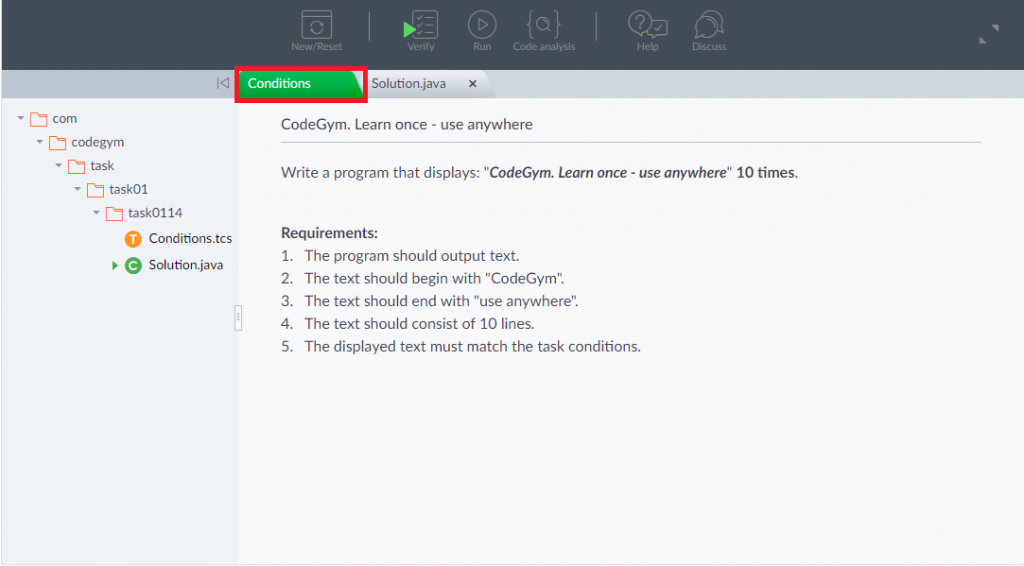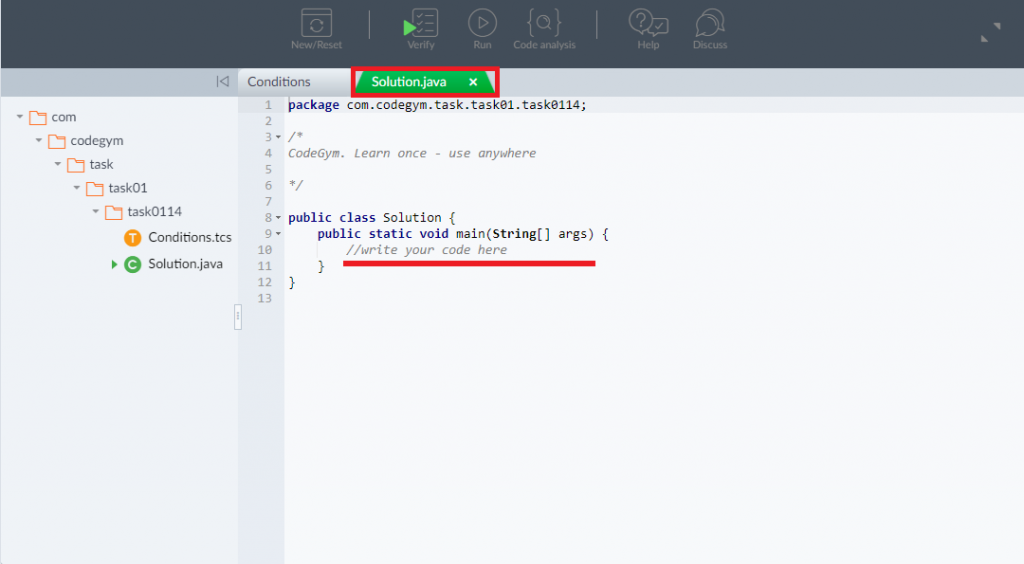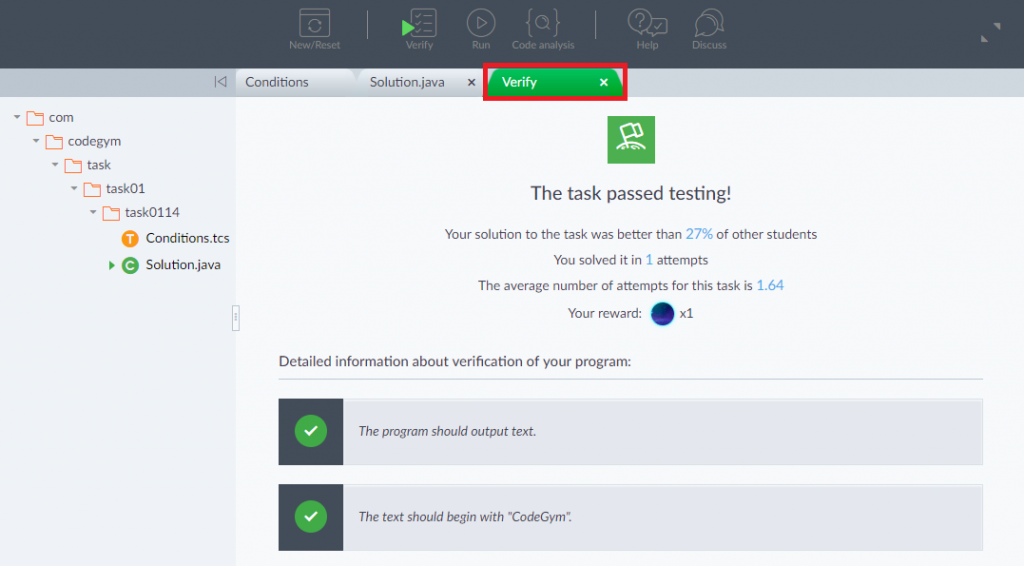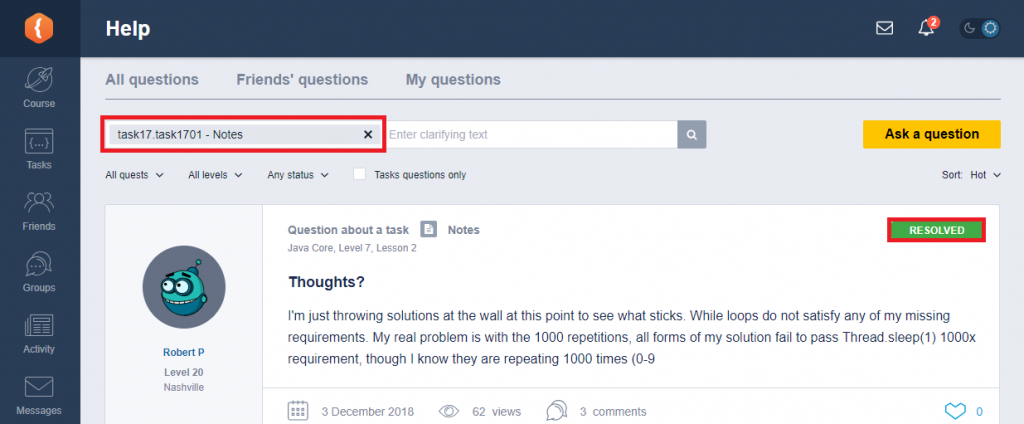CodeGym.cc: Play a Game to Learn Java Programming

A gamified education is ready to kick the boring studying out of our lives. Today let’s take a look on CodeGym.cc, a gamified course, where one can learn how to code in Java from scratch.
But first of all, why choose Java among dozens of languages to start a career? The statistics tell no lies. Java has been on top positions of the programming languages popularity rankings for the past 20 years. Today there are more than 10 millions of Java developers worldwide, and there’s enough of space for the newcomers.
Java is everywhere: Big Data developments, Internet of things, enterprise solutions, and even space exploration. It is a flexible, secure, cross-platform and multi-purpose programming language for writing programs for any devices.
What’s more important, you can learn programming anywhere thanks to a wide range of online courses. Let’s see, what’s the best way to learn Java coding and is it possible not to lose your motivation when you learn alone.
CodeGym.cc is a relatively new online platform for mastering Java programming. Here are five key features of the course, which may help in learning how to code in Java and become confident at it.
1. A gamified Java tutorial for the beginners
CodeGym.cc is geared towards learners with zero experience in programming. Though students with a developer’s background will surely embrace many features of this platform.
The course is designed with numerous gaming technologies to bring a better learning experience, and help users in clearing the major obstacle — a lack of motivation in self-education. In this case, a futuristic plot, the vivid characters and a way of explaining complicated concepts through real-life examples are pushing students to move forward.
CodeGym’s storyline expands in the future. It is the year 3018 when the spaceship crashes on a “wild” planet with robots. The crew needs to teach them programming to clear the rocks and free the ship. A user’s character is a young robot called Amigo, who will learn Java fundamentals by passing four educational quests.
Each quest guides a user through a certain general subject like Java Core, Java Syntax, Java Collections, and Java Multithreading. Each quest consists of 10 levels with 12-13 lectures and a few dozens of different tasks.
To become a programmer you need to code — that’s the motto of the course. And this is exactly what you need to do approximately 80% of the time you spend on this online platform. If you want to progress and open new lessons, you need a “dark matter”, which you receive for completing tasks.
Each new subject in Java is explained by one of the crew’s members, while captain John Squirrels is responsible for bringing a dash of motivation at the beginning of each level. All lectures are written in the conversational format with jokes and easy to understand examples. Imagine you’re reading a funny story and learning Java at the same time. Sounds cool, right?
2. Up to 500+ hours of practice and coding from the first lesson
Again, coding skill is sharpened only through practice. It’s almost impossible to memorize a new piece of theory without trying to implement what you’ve just learned immediately.
CodeGym offers powerful capabilities to practice Java programming. Overall, there are 1200+ tasks of three different types:
- writing your own code
- fixing the source code
- retyping code parts
The course accustoms students to use professional Java developers’ tools like IntelliJ IDEA. Though it’s still handy to solve tasks online directly on CodeGym.cc website. Each task is presented in a frame (web IDE) with different tabs. The first one contains the task requirements:

After you read them carefully, click on the “Solution” tab to write your code or fix the source code:

Then click on the “Verify” button to check your solution:

You will get the result in a matter of seconds, right after the validator matches the solution with the task requirements.

Each successful solution brings you a few points of the “dark matter”. Of course, more complicated tasks bring you more reward.
3. Useful tips on improving your code
You rarely think about the style of the code while you learn, and it’s okay. First of all, you need to get the grip of Java fundamentals. But the style of the code is something that differs a “pro” from a starter. Click the “Code analysis” button after you complete the solution to get some recommendations from the virtual mentor at CodeGym and improve your code.
4. Java fundamentals with the real-life examples
Let’s be honest, it’s possible to learn Java programming endlessly. A great software developer will study something new for life to broaden his stack of technologies and follow the trends.
But you need far less theoretical learning to simply start coding and get the Junior position. At CodeGym’s course, you’ll get a minimum theory within a short timeframe to form a strong basis for further professional growth.
Each lecture in the course is short and easy to read. It takes 5 to 10 minutes to read the new subject and move straight to the tasks.
5. A growing and helpful community
Need a hint on solving a tricky task? Of course, you’ll need it someday. There’s a “Help” section at CodeGym, where you can discuss any task and get explanations from other students and skilled software developers.

Also, you can discuss almost any subject from the programming field in the “Groups” sections of CodeGym. It’s early to say about CodeGym as a great source of Java programming content, but there is plenty of additional material, which enhances the course itself.
Conclusion
CodeGym is a course for learning Java programming through practice in a fancy way.
Pros:
- hands-on practice, plenty of cool tasks with instant verification and tips on code improvement;
- entertaining gamified learning instead of boring lectures and video tutorials;
- a strong motivation to continue studying until you master coding.
Cons:
- requires the extra reading to get a thorough understanding of Java language;
- as for now, isn’t fully adjusted for studying on mobile devices.
Was published on Tech Notification blog